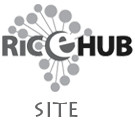- Introduction
- Executive Summary
- The Goronyo Rice Innovation Platform
- Inception workshop
- Diagnostic survey to identify the Strengths, Weaknesses, Opportunities and Threats (SWOT) of the rice value chain in the Middle Rima Valley Irrigation Scheme (MRVIS), Gorony
- Roles of value chain actors
- Establishment of Goronyo Rice Innovation Platform (GRIP)
- Collaboration with regional project coordination unit to provide ICT based platform for stakeholders in the value chain to share and exchange information
- Level of involvement of actors especially farmers during value chain fixing
- Rice Production and Productivity in Goronyo
- Rice Post-harvest, Processing and Marketing in Groronyo
- Rice husk utilization
- Training Materials
- Technical drawings of locally fabricated equipment and stoves
- Value Chain Research in Goronyo
- Experience from other hubs
Three students from Usmanu Danfodio University of Sokoto (UDUS) and staff of Middle Rima Valley Irrigation Scheme (MRVIS) were trained on how to perform diagnostic survey using the model of the strengths, weaknesses, opportunities, and threats (SWOT) and the strategic orientation round (SOR). SWOT and SOR were used to perform diagnostic survey on specific segments of the rice value chain and on the entire rice value chain using actors from each segment and a group of actors from all segments of the value chain, respectively. This activity was thus carried out from April 16 to May 01, 2018. The main objective was to analyse the strengths, weaknesses, opportunities, and threats of the rice value chain in Goronyo. The study included both direct and indirect actors. A two-stage approach including a qualitative analysis through SWOT matrix and quantitative analysis using strategic orientation round were used. Focus group discussions, plenary sessions and in-depth interview were used to collect data. A total of 10 focus group discussions and 6 plenary sessions were conducted. Qualitative and quantitative analyses were performed for each segment of the value chain as well as for the whole value chain.
Results showed that rice farming is a major source of revenue and very important for the livelihood of actors in the Middle Rima Valley Irrigation Scheme (MRVIS). Except for paddy production, the other segments of the value chain such as the seed production, parboiling, milling, storage, and marketing have not benefited from developmental projects.
With respect to the internal factors, the five most important strengths of the rice value chain in MRVIS are good health, availability/use of irrigation system, availability of small personal capital, profitability of the business and availability of raw materials., while the five most important weaknesses are lack of an organized functioning multi-stakeholder platform, difficulties to timely access inputs, difficulty to access financial credits, lack of knowledge on improved practices, non-existence of improved processing equipment, low quality of the milled rice produced and poor utilization of rice by-products.
With respect to external factors, the five most important opportunities are the existence of improved/modern equipment and technologies for each segment of the rice value chain that could be demonstrated in MRVIS, high potential for job creation, government desire to support the rice value chain in Nigeria, availability of markets and existence of companies producing branded rice. The five most important threats are seasonal water scarcity, insecurity in the area, desertification (climate change), pest attacks and farmer-herder conflicts.
Strategic orientation round analysis revealed that the most important strength among the five mentioned above is the good health due to a significant youthful population while the most important weakness was the lack of an organized multi-stakeholder platform that is needed to improve value-chain functioning. The most important opportunity was the existence of improved/modern equipment and technologies for each segment of the value chain that could be demonstrated and disseminated in MRVIS while the most important threat was pest/disease attacks.
Before the intervention, farmers were grouped under different sectors and managed by the Water Users Association (WUA) with an executive chairman and the supervisory led by the Project Manager, the Middle Rima Valley Irrigation Scheme (MRVIS. The farmer sizes were accurately measured. In total, the scheme is made up of 04 sectors (Falaliya, Takakume, Mai-iyali 1 and Mai-iyali 2), 22 blocks and 196 fields canals (FC) on a total area irrigated area of 2,665.8 ha cultivated by 12,325 farmers having an average farm size of 0.21ha.
In MRVIS, rice value chain is dominated by men with a proportion of 73.60% and they are all household heads. Almost all the actors (97.30%) are married and are all from Hausa ethnic group. Most of the RVC actors (68.18%) are adult with age from 36 to 60 years while youth represent 26.36%. In general, most of the actors (73.63%) have an experience of at least six years in the rice value chain. About 54% of the actors in the area have an annual total income less than N300, 000. About 90% of these actors come from households of at least six members. Most actors (76.40%) have never attended formal schooling but about 36.40% have attended Qur’anic School. It is important to mention that 6.40% of them attended tertiary school and are opinion leaders who can be used to encourage or convince other actors to use improved technologies and practices for their specific activities along the value chain. Main activity in the scheme is farming (67.30%) followed by processing (17.30%). More than half of the actors belong to the Water User Association of Farmer Association. However, there are other small groups formed by projects or private companies such as Fadama III Farmers Association or Dangote Farmers Association. Majority of actors in the scheme don’t have access to extension service (61.80%), have not received specialized training in any segment of the RVC (59.10%) and have no access to credit (70%). Moreover, those who have accessed to credit were able to get only 86,473 naira over the last three years with an average of about 28,825 naira per year.













